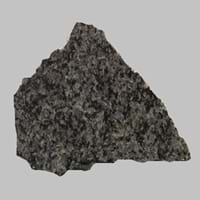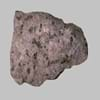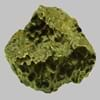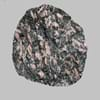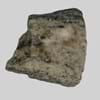Definition
Adamellite is a coarse-grained porphyritic igneous rock, a variety of Monzogranite and dominated by phenocrysts of orthoclase in a granular groundmass of perthite, plagioclase and quartz
Norite is a mafic intrusive igneous rock composed largely of the calcium-rich plagioclase labradorite, orthopyroxene, and olivine
Discoverer
Unknown
Unknown
Etymology
From German adamellit and from Monte Adamello, a mountain in Italy, its locality
From the Norwegian name for Norway, Norge
Class
Igneous Rocks
Igneous Rocks
Sub-Class
Durable Rock, Hard Rock
Durable Rock, Hard Rock
Other Categories
Coarse Grained Rock, Opaque Rock
Coarse Grained Rock, Opaque Rock
Texture
Porphyritic
Phaneritic
Color
Black, Grey, Orange, Pink, White
Dark Grey to Black
Durability
Durable
Durable
Scratch Resistant
Yes
Yes
Appearance
Veined or Pebbled
Veined and Shiny
Interior Uses
Bathrooms, Countertops, Decorative Aggregates, Entryways, Floor Tiles, Homes, Hotels, Kitchens, Stair Treads
Decorative Aggregates, Entryways, Interior Decoration
Exterior Uses
As Building Stone, As Facing Stone, Bridges, Paving Stone, Near Swimming Pools, Office Buildings, Resorts
As Building Stone, As Facing Stone, Paving Stone, Garden Decoration
Other Architectural Uses
Curbing
Curbing
Construction Industry
As Dimension Stone
As Dimension Stone, Building houses or walls, Cement Manufacture, Construction Aggregate, for Road Aggregate
Medical Industry
Not Yet Used
Not Yet Used
Antiquity Uses
Artifacts, Monuments, Sculpture, Small Figurines
Artifacts, Monuments, Sculpture
Commercial Uses
Curling, Gemstone, Laboratory bench tops, Tombstones
Cemetery Markers, Commemorative Tablets, Laboratory bench tops, Jewelry, Sea Defence, Tombstones
Types
Not Available
Not Available
Features
Available in Lots of Colors and Patterns, It is One of the Oldest, Strongest and Hardest Rock
Smooth to touch
Archaeological Significance
Famous Monuments
Data Not Available
Data Not Available
Famous Sculptures
Data Not Available
Data Not Available
Pictographs
Not Used
Not Used
Petroglyphs
Not Used
Not Used
Formation
Adamellite is a type of Igneous rock which is formed through the cooling and solidification of lava or magma and is a variety of Monzogranite.
Norite is a fine-grained, hard rock which is a type of metasomatite, essentially altered basalt. It forms with or without crystallization, either below the surface as intrusive rocks or on the surface as extrusive rocks.
Mineral Content
Apatite, Biotite, Chlorite, Orthoclase, Perthite, Plagioclase, Quartz, Titanite, Zircon
Augite, Olivine, Plagioclase, Pyroxene
Compound Content
Aluminium Oxide, CaO, Iron(III) Oxide, FeO, Potassium Oxide, MgO, MnO, Sodium Oxide, Phosphorus Pentoxide, Silicon Dioxide, Titanium Dioxide
Aluminium Oxide, CaO, Chromium(III) Oxide, Iron(III) Oxide, Potassium Oxide, MgO, Sodium Oxide, Silicon Dioxide, Sulfur Trioxide
Types of Metamorphism
Burial Metamorphism, Contact Metamorphism, Hydrothermal Metamorphism, Impact Metamorphism, Regional Metamorphism
Cataclastic Metamorphism, Impact Metamorphism
Types of Weathering
Biological Weathering
Biological Weathering
Types of Erosion
Chemical Erosion, Glacier Erosion, Wind Erosion
Chemical Erosion, Coastal Erosion
Grain Size
Coarse Grained
Coarse Grained
Fracture
Not Available
Conchoidal
Porosity
Less Porous
Highly Porous
Luster
Dull to Grainy with Sporadic parts Pearly and Vitreous
Not Available
Cleavage
Not Available
Not Available
Toughness
Not Available
1.6
Specific Gravity
2.6-2.7
2.86-2.87
Transparency
Opaque
Opaque
Density
2.6-2.8 g/cm3
2.7-3.3 g/cm3
Specific Heat Capacity
Not Available
Resistance
Heat Resistant, Wear Resistant
Impact Resistant, Pressure Resistant, Wear Resistant
Deposits in Eastern Continents
Asia
China, India, Iran, Saudi Arabia, Sri Lanka, Taiwan, Thailand, Turkey, Vietnam
India, Russia
Africa
Angola, Egypt, Madagascar, Namibia, Nigeria, South Africa
South Africa
Europe
Austria, Belgium, Finland, France, Germany, Italy, Norway, Sardinia, Spain, Switzerland, The Czech Republic, Venezuela
Germany, Greece, Italy, Scotland, Turkey
Others
Not Yet Found
Greenland
Deposits in Western Continents
North America
Canada, USA
Canada, USA
South America
Not Yet Found
Brazil, Colombia, Venezuela
Deposits in Oceania Continent
Australia
Not Yet Found
New Zealand, Queensland

